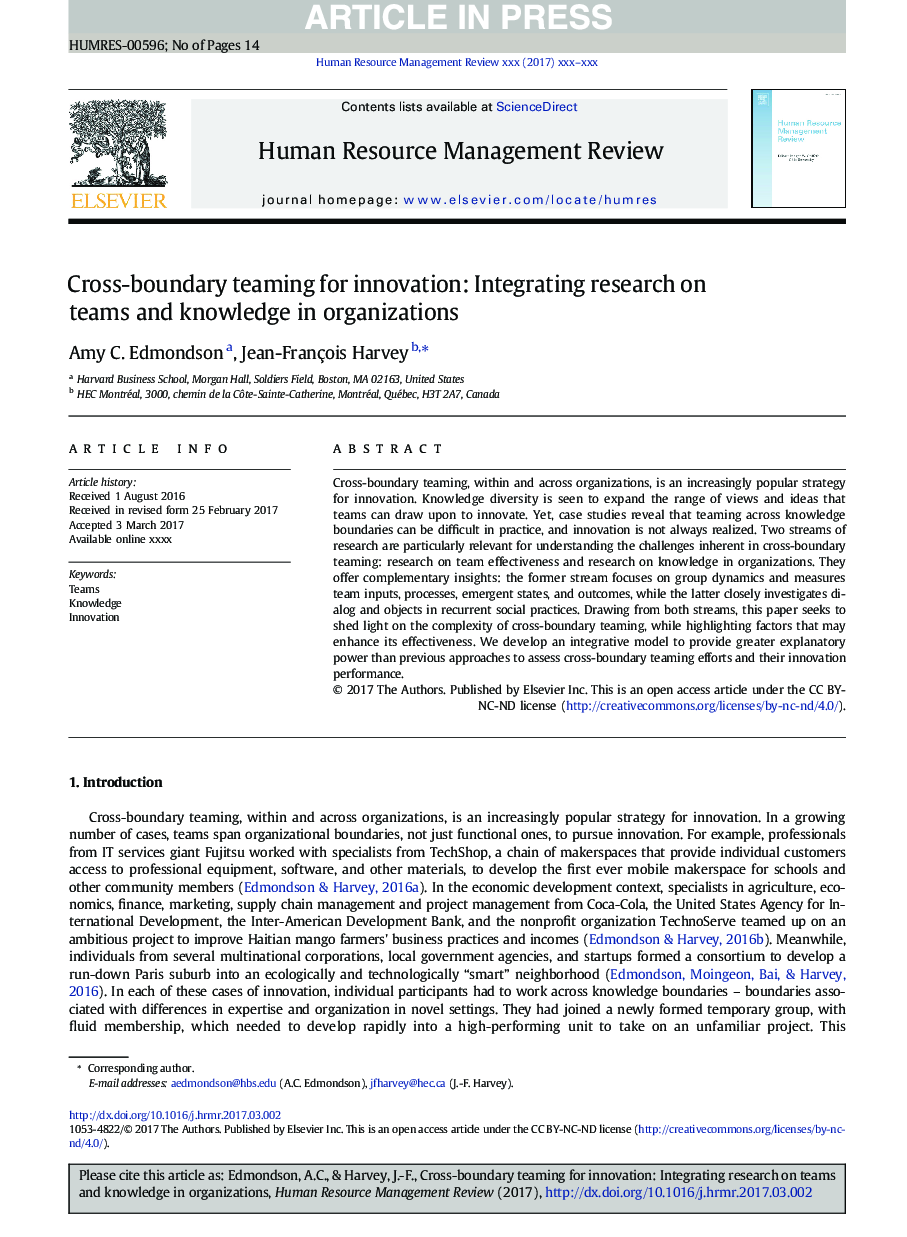| Article ID | Journal | Published Year | Pages | File Type |
|---|---|---|---|---|
| 8947805 | Human Resource Management Review | 2018 | 14 Pages |
Abstract
Cross-boundary teaming, within and across organizations, is an increasingly popular strategy for innovation. Knowledge diversity is seen to expand the range of views and ideas that teams can draw upon to innovate. Yet, case studies reveal that teaming across knowledge boundaries can be difficult in practice, and innovation is not always realized. Two streams of research are particularly relevant for understanding the challenges inherent in cross-boundary teaming: research on team effectiveness and research on knowledge in organizations. They offer complementary insights: the former stream focuses on group dynamics and measures team inputs, processes, emergent states, and outcomes, while the latter closely investigates dialog and objects in recurrent social practices. Drawing from both streams, this paper seeks to shed light on the complexity of cross-boundary teaming, while highlighting factors that may enhance its effectiveness. We develop an integrative model to provide greater explanatory power than previous approaches to assess cross-boundary teaming efforts and their innovation performance.
Keywords
Related Topics
Social Sciences and Humanities
Business, Management and Accounting
Marketing
Authors
Amy C. Edmondson, Jean-François Harvey,
